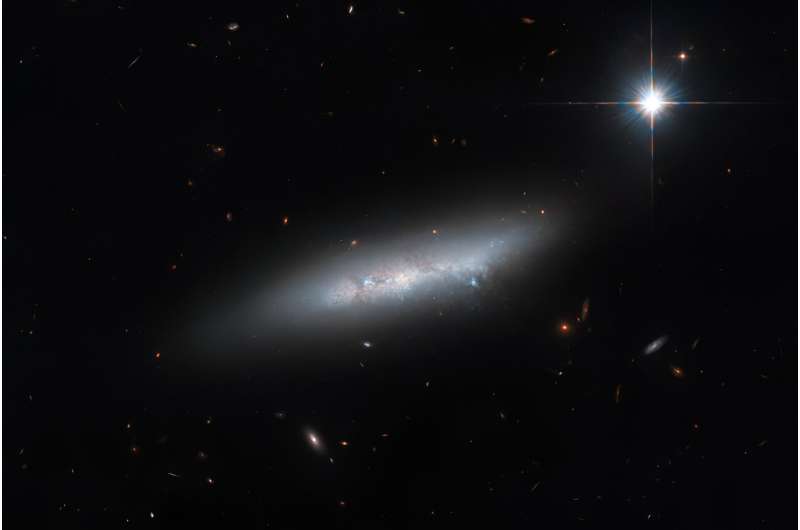This article has been reviewed according to Science X's editorial process and policies. Editors have highlighted the following attributes while ensuring the content's credibility:
fact-checked
trusted source
proofread
Hubble looks at a late-type galaxy

This NASA Hubble Space Telescope image features NGC 2814, an irregular galaxy that lies about 85 million light-years from Earth. In this image, which was captured using Hubble's Advanced Camera for Surveys, the galaxy appears to be quite isolated: visually, it looks a little like a loose stroke of bright paint across a dark background. However, looks can be deceiving.
NGC 2814 actually has three close (in astronomical terms) galactic neighbors, not seen in this image: a side-on spiral galaxy known as NGC 2820, an irregular galaxy named IC 2458, and a face-on non-barred spiral galaxy called NGC 2805. Collectively, the four galaxies make up a galaxy group known as Holmberg 124. These galaxies are sometimes referred to as a group of "late-type galaxies."
The terminology "late-type" refers to spiral and irregular galaxies, while "early type" refers to elliptical galaxies. This rather confusing terminology has led to a common misconception within the astronomy community. It is still quite widely believed that Edwin Hubble inaccurately thought that elliptical galaxies were the evolutionary precursors to spiral and irregular galaxies, and that that is the reason why ellipticals are classed as early type and spirals and irregulars are classed as late-type.
This misconception is due to the Hubble tuning fork of galactic classification, which visually shows galaxy types proceeding from elliptical to spiral, in a sequence that could easily be interpreted as a temporal evolution. However, Hubble actually adopted the terms early type and late-type from much older astronomical terminology for stellar classifications, and did not mean to state that ellipticals were literally evolutionary precursors to spiral and irregular galaxies. In fact, he explicitly said in a 1927 paper that "the nomenclature … [early and late] … refers to position in the sequence, and temporal connotations are made at one's peril."
Despite Hubble himself being quite emphatic on this topic, the misunderstanding persists almost a hundred years later, and perhaps provides an instructive example of why it is helpful to classify things with easy-to-interpret terminology from the get-go.
Provided by NASA





















